«Everywhere there is a party noise that dazzles and stuns»
(newspaper «O Heraldo», 19/2/1903)
The 15th of February 1903 was not only engraved in the annals of the history of the Algarve, but also in the memory of the thousands of people who flocked to the left bank of the Arade, to watch the celebrations for the inauguration of the then Portimão railway branch.
Progress reached the gates of Vila Nova de Portimão. Unsuccessful as, 38 years before, were the attempts of the Viscount of Bívar to have the railway line from Beja to Faro went first to Portimão and then to the district capital, the railway line was a reality there.
Deputy for Portimão, Viscount Bívar, that we already remembered here, was a unique figure in the defense of the interests of the Algarve in general and of the Barlavento in particular in the Chamber of Deputies, during the 15 years in which he sat there (1853-1868), as well as in the Chamber of Pares, from 1875 onwards.
It is true that, at the time, the movement of the port of Portimão was greater than that of Faro, but this was not enough to convince the government, or some municipalities in the Algarve, in this regard.
Thus, when, on March 29, 1865, that deputy questioned the then Minister of Public Works, João Crisóstomo, about the direction of the railroad from Beja to Faro and the former informed that it would be as close as possible to Portimão, but would not contemplate that locality, Coelho Bívar was categorical: «Your Excellency will be disillusioned, if the road does not go through Portimão, later on a new road will have to be built. branch, which will join the path of S. Bartholomeu to Faro».

Fifteen years later, in 1880, the then Minister of Public Works, Augusto Saraiva de Carvalho, aired in the Chamber of Deputies that, from the Algarve railway, «there should be a branch to Villa Nova de Portimão, a very important branch, because it will serve a population of many thousand souls who will feed its movement».
On March 21, 1881, a bill was discussed that foresaw, among others, the construction of «a branch line that departs from S. Bartholomeu de Messines or Tunes, goes through Silves to Villa Nova de Portimão».
However, its implementation took time. Remember that, at that time, the train was a mirage in the Algarve. It is true that the works between Beja and Faro they had started in 1865, only to be suspended later, and, as a result, the locomotive did not hiss below Casével (Castro Verde), where it had arrived on December 20, 1870.
Finally, its execution, along with the Portimão branch, was enshrined in the Law of March 29, 1883 and in the decree of September 17 of the same year, the first became a reality in 1889, while the second had to wait for the dawn of the XNUMXth century.
If the construction of the line between Beja and Faro was not a priority for the successive governments (the work managed to materialize 20 years after the scheduled date), the Portimão branch line even less, in such a way that the viscount of Bívar, who fought so hard for its execution, did not see it materialized, since he died in 1890.
The royal visit to the Algarve, in October 1897, with King Carlos promising to take an interest in the subject, turned out to be decisive. In the following February, the monarch approved the layout of the line and, with it, the beginning of work.
Thus, in the spring of 1898, work began on a new station, created on purpose in the depopulated site of Gateiras, stealing the name of a nearby village, Tunes, or rather “Tunis”, as it was written at the time.
However, if the railroad finally advanced towards the west, the chosen direction was still shrouded in controversy. Ataíde Oliveira, the well-known monographist, born in Algoz, repudiated the site determined for the station on his land, considering it far from the center of the village and, therefore, contrary to its interests.
In Silves, the protest was similar, although with more grounds, as the station was two kilometers from the city. Better luck met the people of Alcantarilha and Pêra, who saw the station being built in the place they intended and not as it was designed.
Controversies and many newspaper articles aside, the train arrived in Algoz still in 1899, to, on the following March 19, festively reach Poço Barreto, and Silves on February 1, 1902.
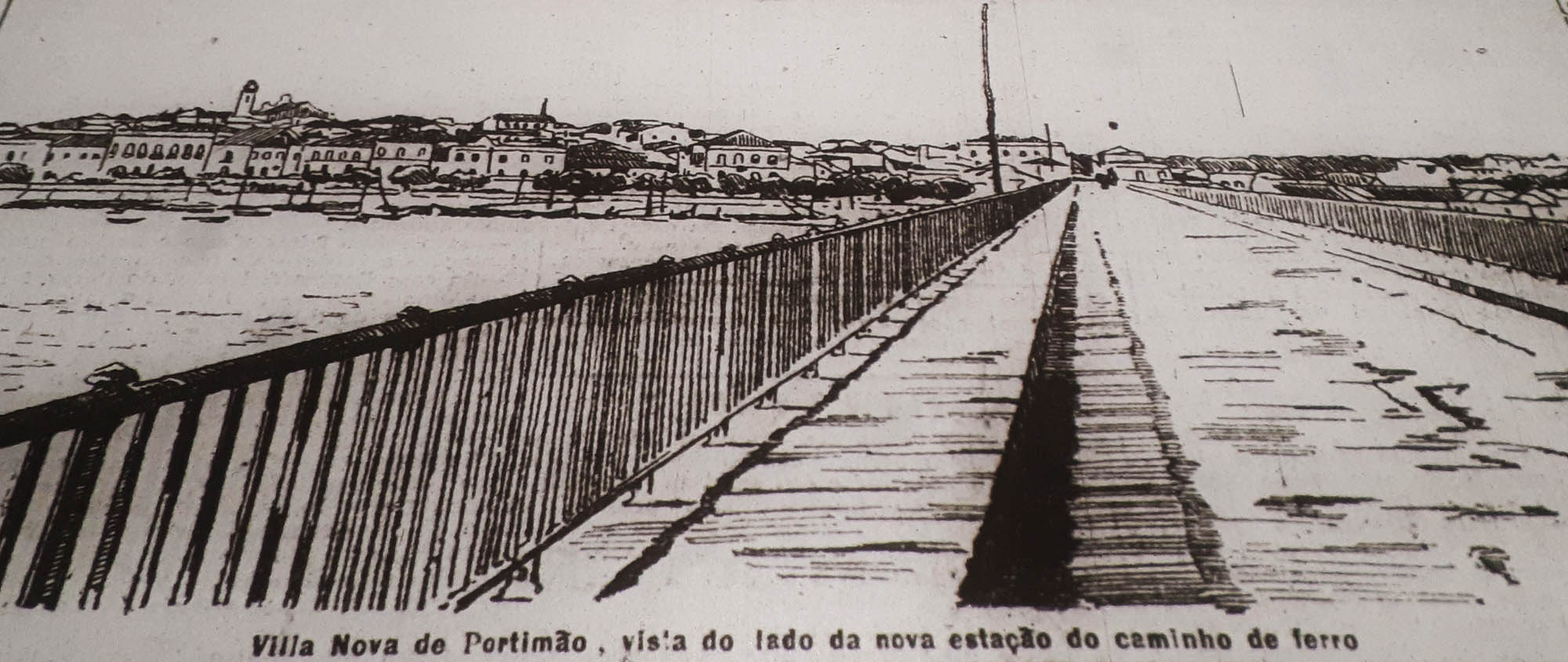
A year and fifteen days later, he was a reality at the gates of Portimão. Almost 14 years after he reached Faro, people from Portimão heard the hiss of progress tearing through the skies of Barlavento, although, for Sotavento, it was only on March 28, 1904 that the train reached Olhão…but that is another story.
Barlavento solemnized the event, with «roaring parties», as noted in the press at the time. On February 14, 1903, the Portimão correspondent for «O Século» reported that there was great enthusiasm in the village, with the avenue, quay and adjacent streets «visitably flagged». There were also purpose-built gazebos and even a fountain, while hotel rooms were sold out.
In turn, from Faro, the same newspaper reported «the inauguration of the Portimão railway promises to be of great grandeur. No less than five hundred people come from this city and the councils in the western part of the province also have a large representation in those festivities».
The morning of that Sunday, February 15th, dawned like spring and festive. In Faro, the city recorded, that dawn, an unusual movement, according to the weekly «O Heraldo», numerous groups «where joy gushes laughter and pagan invectives, cross the city on their way to the station».
A grandiose inaugural train, with 13 carriages and two vans, with a total of 300 seats, was waiting for the passengers, who crowded into the platform, bound for Portimão, and it left full at 8:00 am.
There followed the civil Governor, Commander Ferreira Neto, deputies of the nation, civil and military authorities, railway technicians, students (96 in number), teachers from high school and other schools, a music band, «ladies of the first society», journalists, etc.
In Loulé, the philharmonic Marçal Pacheco joined the composition, also summoned for the inaugural act, as well as many people from Loulé. There were 40 passwords distributed, but there were not enough seats for so many passengers. A protest that knew its beginning there.
In Silves, and according to «O Século», it was the inaugural train «expected by a huge mass of people and many gentlemen and ladies with two philharmonics, who also followed to Portimão».
The train, which had arrived at Loulé full, receiving more passengers and municipal entities at several stations along the route, found itself, on leaving Silves, bursting at the seams, in such a way that, for the correspondent of «O Heraldo» , «in a little while we will have Mouraria inside the wagons», but, to cheer him up, he soon recognized «the vaunted peacefulness of this serene Algarve people!». After all, the trip was free and nobody wanted to miss it.
A little later, “suddenly, very numerous rockets screech in the air. The train slows down, whistles, stops. It's Estombar". At the penultimate station, the first on the new line, where Câmara de Lagoa was waiting for the train, «there was a great number of rockets and many enthusiastic cheers for Mr. civil governor, minister of the kingdom, regenerating party, viscount of Bívar and minister of public works». Acclamations that had been repeated throughout the journey.
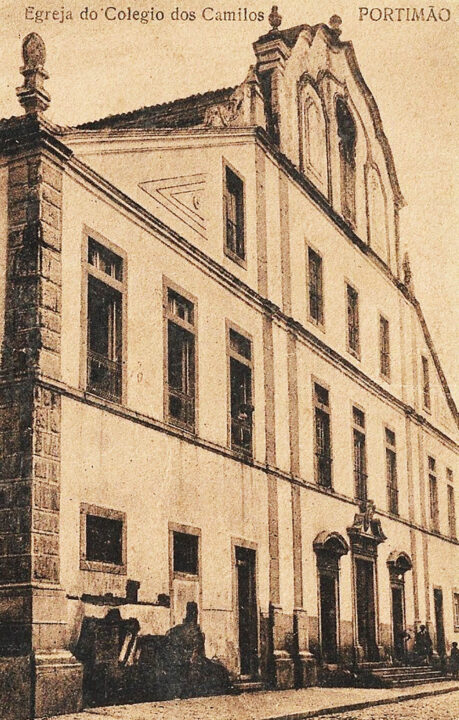
More entities and two philharmonics, coming from Alvor, joined the composition. That one left to the sound of the national anthem and was now approaching its destination. Let's follow «O Heraldo»: «A little later some small sketches of houses on the horizon… Portimão in sight. Portimão, at last! The doors… of the carriages are opened, in a disorderly way, and we disembark on a sandy beach. It's the season here; the villa beyond, a twenty-minute walk».
Three hours later, at 11:00 am, the inaugural train arrived at its destination. For the weekly «O Districto de Faro», it was there that «the party reached bello and phantastico proportions». The Chamber of Portimão, presided over by Visconde da Rocha, although without a banner, as the station is located in the municipality of Lagoa (currently called Ferragudo-Parchal), as well as other authorities, were waiting for the visitors.
From there, because the new branch ended on the Lagoon side of the River Arade, it was still necessary to cross the road bridge, in order to actually reach Portimão.
After a brief speech by António Bernardo da Cruz, doyen of the Algarve press, culminating in warm cheers for the king, queen and other personalities responsible for the work, a procession was formed on foot, bound for Portimão City Hall, where the formal session took place. .
At the forefront, the Artistic Philharmonic 8th of December, Faro, followed by the academy and by the bands Democrata Silvense and União Alvorense, behind «a huge wave of people». The «influx of people was such that it was difficult to walk», according to «O Século», and then add: «suffice it to say that the procession established from the station to the villa, a distance of 1.600 meters, was completely taken over by the large crowd, which converged to that point from all sides of the province».
Let us return to the description of «O Heraldo»: «after crossing the bridge, we enter the villa, which, being very picturesque and cheerful, now gives us a dazzling appearance with its whimsical decorations: flagged streets and very rich bedspreads decorating the windows of noble buildings».
The parade goes through Visconde Bívar square, Rua de Santa Isabel, Rua do Postigo, Rua dos Fumeiros, to the Town Hall (at the time in the Colégio building). Here the authorities withdrew for the solemn session, while the people continued their tour of the village, accompanied by philharmonic bands. The "ladies of Faro» and other ladies of the entourage were received in the rooms of the Grémio Familiar, from whose windows they watched the procession.
In the Chamber, the speeches were guided by the recognition of the importance of the new means of transport now available to the people of Porto, as well as thanks to the governments that contributed to its implementation.
The civil governor reminded the importance that the Algarve had for D. Carlos, who came here to carry out his oceanographic studies. The session ended with a glass of champagne and a toast to all those who collaborated in the execution of such an important improvement.
Both the Chamber and the civil governor sent telegrams to the royal family, president of the council of ministers and other entities, as a sign of recognition for the inaugurated work.
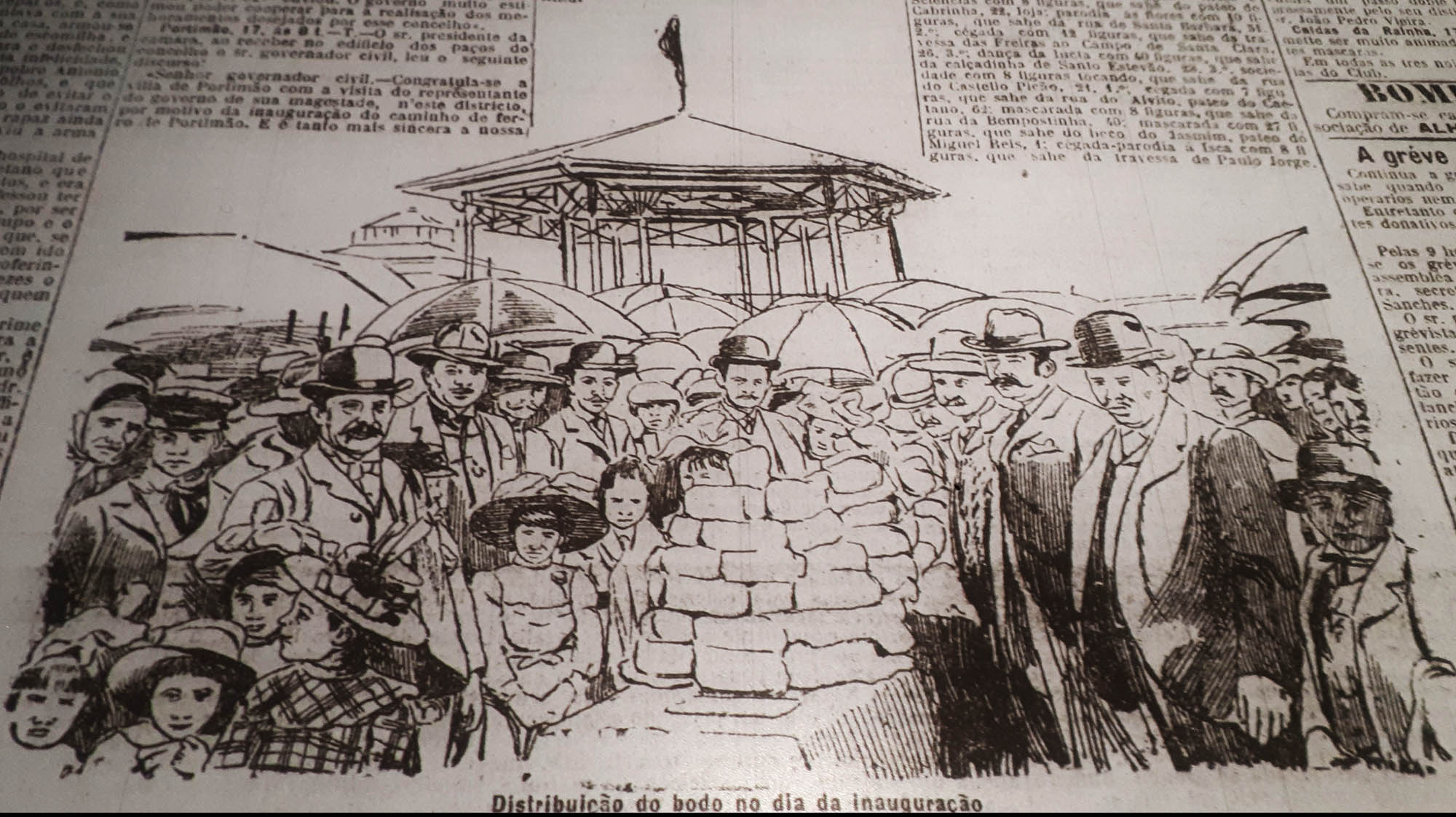
At Praça Visconde Bívar, the festivities commission, made up of local businessmen and traveling salesmen from Lisbon, distributed a bodo to 50 poor people, consisting of bread, meat, beans, rice and one hundred reis in cash. Act brightened by the bands of Faro and Silves.
After the bodo, the commission met at the home of Dr. Ernesto Cabrita, where homage was paid to him. On that day, the local magazine «Algarve» published a commemorative supplement that was widely distributed.
In the village, movement was unusual. As students passed through the streets, «the ladies threw them a great profusion of flowers from the windows, which they kindly thanked», wrote «O Districto de Faro».
According to «O Heraldo», «the hotels, catering establishments and shops are full of outsiders. There is a party noise everywhere that dazzles and stuns».
At 14:00 pm, many rushed to the station, to reach the best seats, since, shortly afterwards, the train, with the authorities, left towards the district capital, to the sound of the anthem of the Charter (then the national anthem). performed by the Philharmonic Faro.
On the trip, the same enthusiasm reigned as in the morning, with the advantage that the train gradually emptied, until the end of the itinerary at 18:00.
But if the festivities lost fervor for those who left, in Portimão they continued: «the town is all flagged and the river with its boats, seen from the bridge, gives a beautiful aspect to the port, which is the charm of visitors».
At night and according to «O Século», which we have been quoting, there were «splendid illuminations by the shutter, by the commission for the festivities in the square of Visconde de Bivar, which cover the entire Aterro and Caes». Light fixtures that extended to private homes, the customs building and the water pavilion.
The fountain «illuminated with glasses» produced a beautiful effect due to the height it reached. In different places, philharmonic bands performed, while the streets were “crowded with outsiders”.
The following day, the Loulé Philharmonic, together with the commemoration committee, toured the streets of the town again and with its passage, the celebrations ceased.
These constituted "a real delirium, one of those festivals that leave pleasant and indelible memories in the memory of the people", as written by "O Século". In turn, the «Diário de Notícias», in balance, attested «there was not the slightest unpleasant incident».
Six daily trains began to serve that station, three in each direction. In 1905, there were 49 passengers who embarked there and dispatched 241 tons of goods. Only on the 2th of July 756 did Portimão start to enjoy its own station next to the town, when the railway bridge over the Arade and the line to Lagos.
After 120 years, the now called Linha do Algarve is once again under construction, with a view to its electrification. If, in 1903, the delay in the construction of the road in relation to Faro was 14 years, more than a century later this delay is even greater, only 20 years after the catenary reached Faro it will be a reality in Portimão.
After all, generations take turns, political regimes have changed, but investment priorities in the Algarve, given the national context, these seem immutable and are synonymous with postponed, slow, and not infrequently suspended forever…. But, for now, February 1903, "we congratulate the people of the barlavento for this improvement", in the words of the Diário de Notícias, and we praise those responsible for it: long live the royal family, long live the Viscount of Bívar, long live the Minister of Works Public, long live Vila Nova de Portimão!…
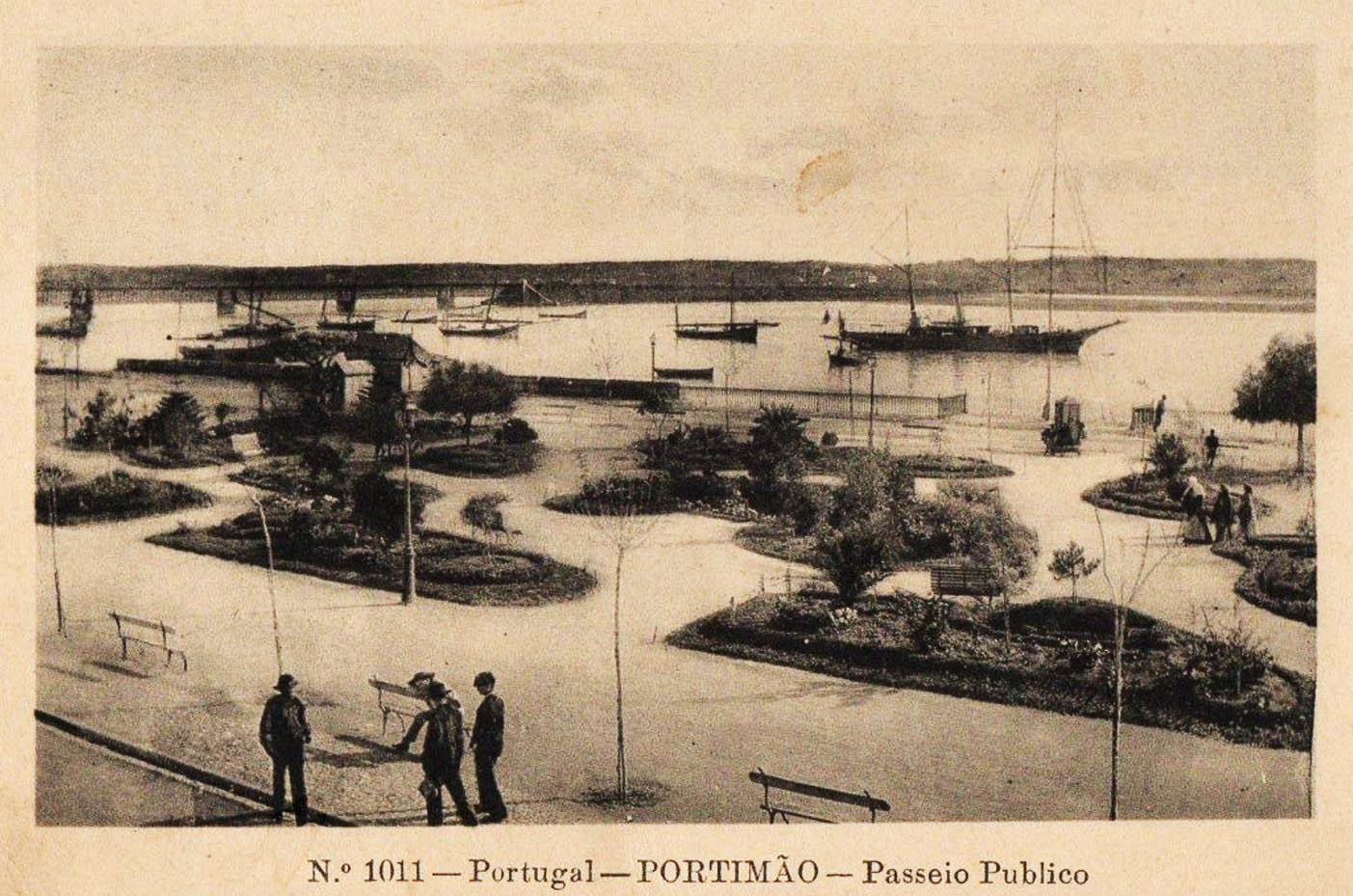
Author Aurélio Nuno Cabrita is an environmental engineer and researcher of local and regional history, as well as a regular collaborator of the Sul Informação.
Note: The spelling of the time has been preserved in the transcriptions. The images are merely illustrative and correspond, for the most part, to illustrated postcards from the first half of the XNUMXth century.
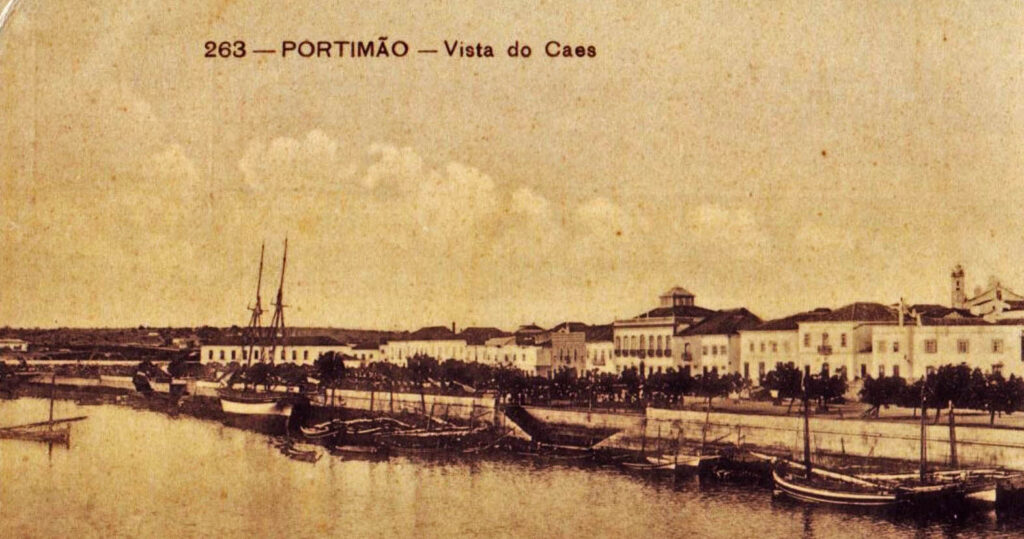


















Comments